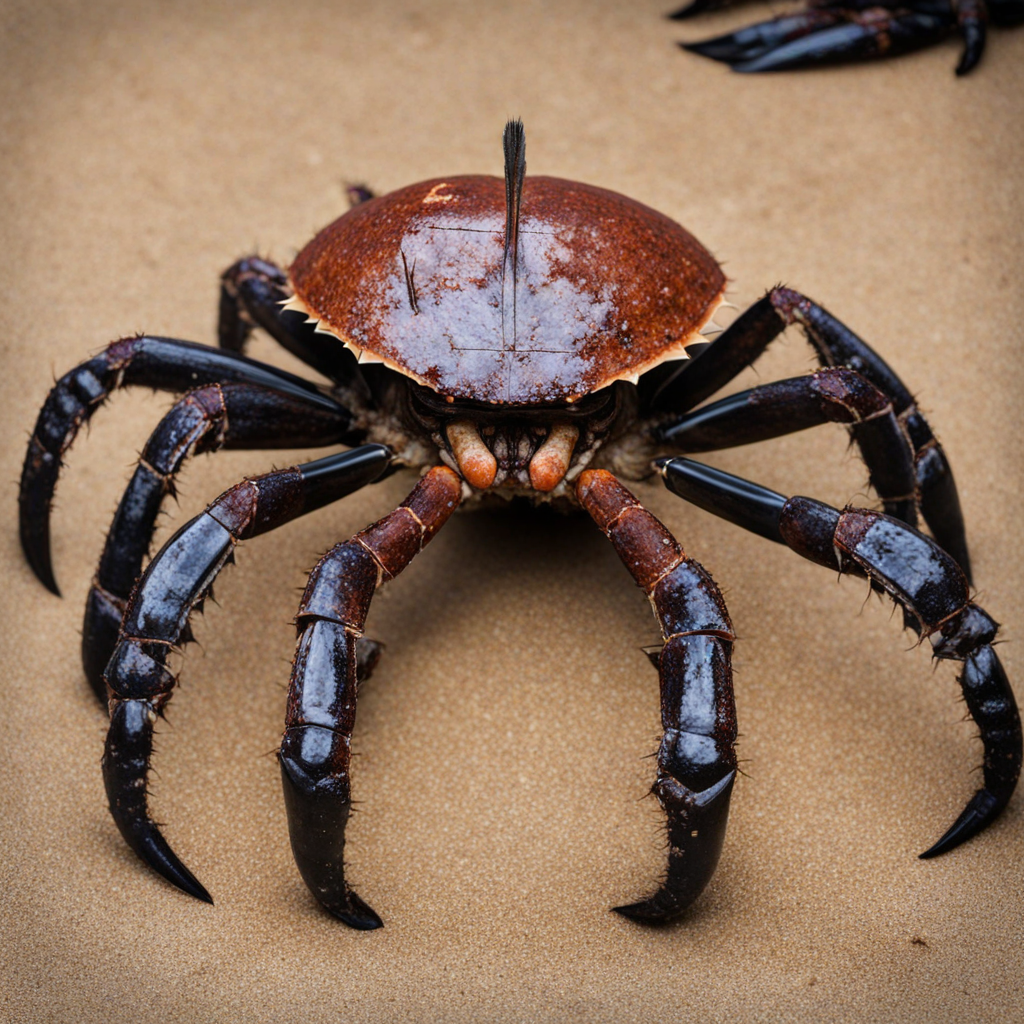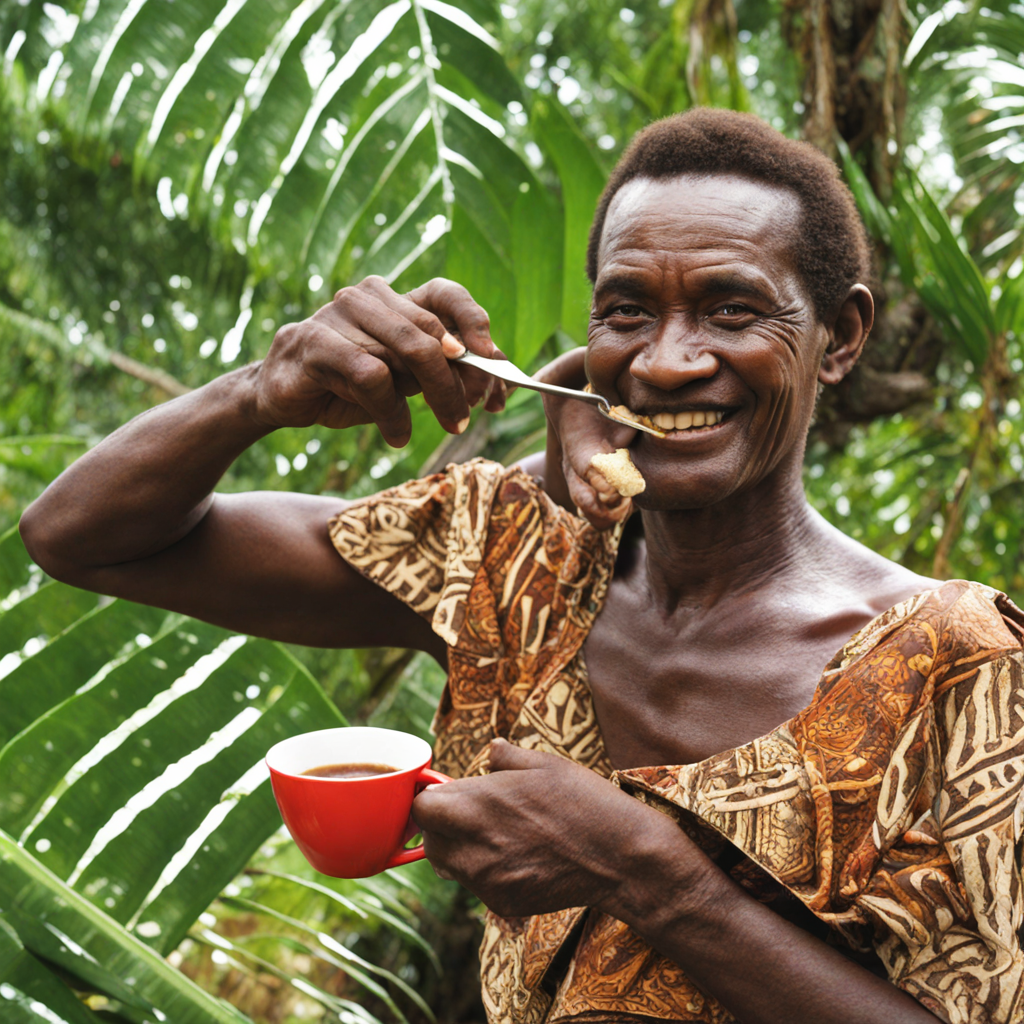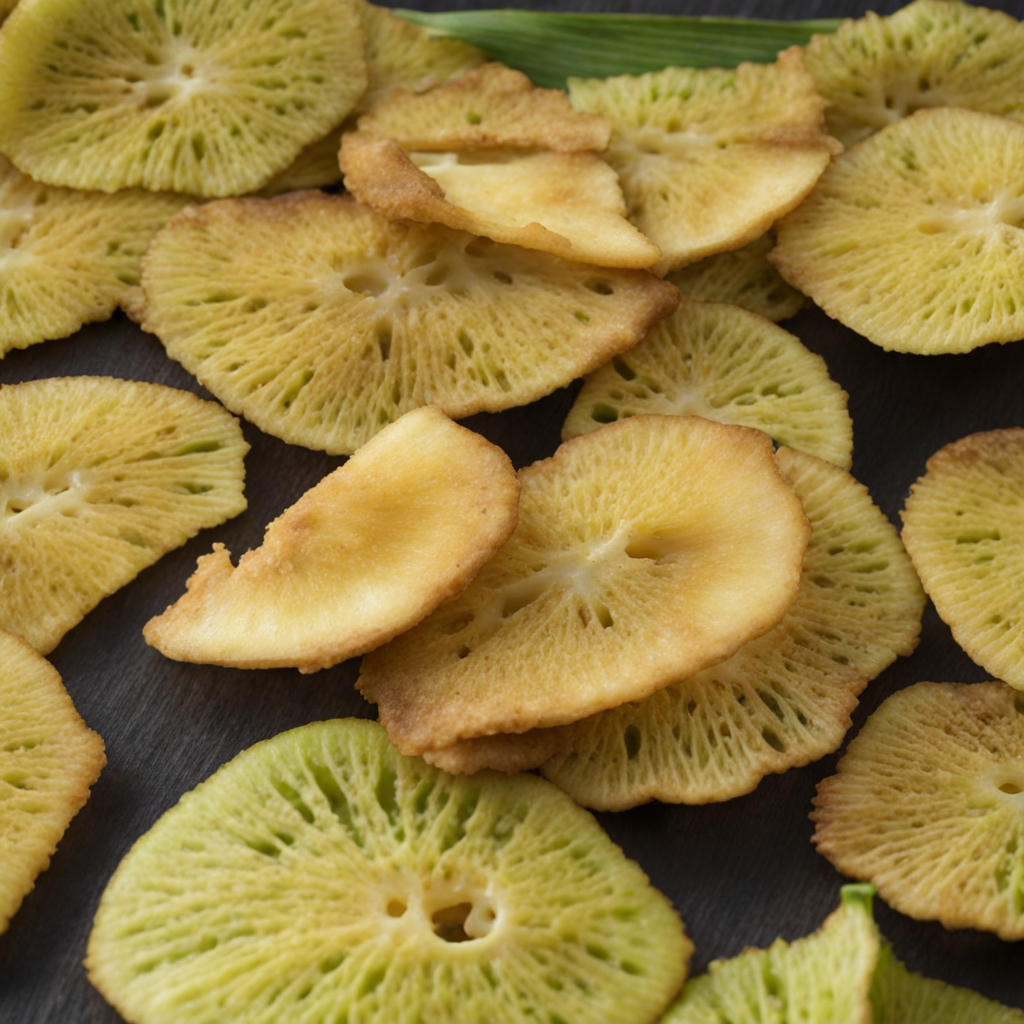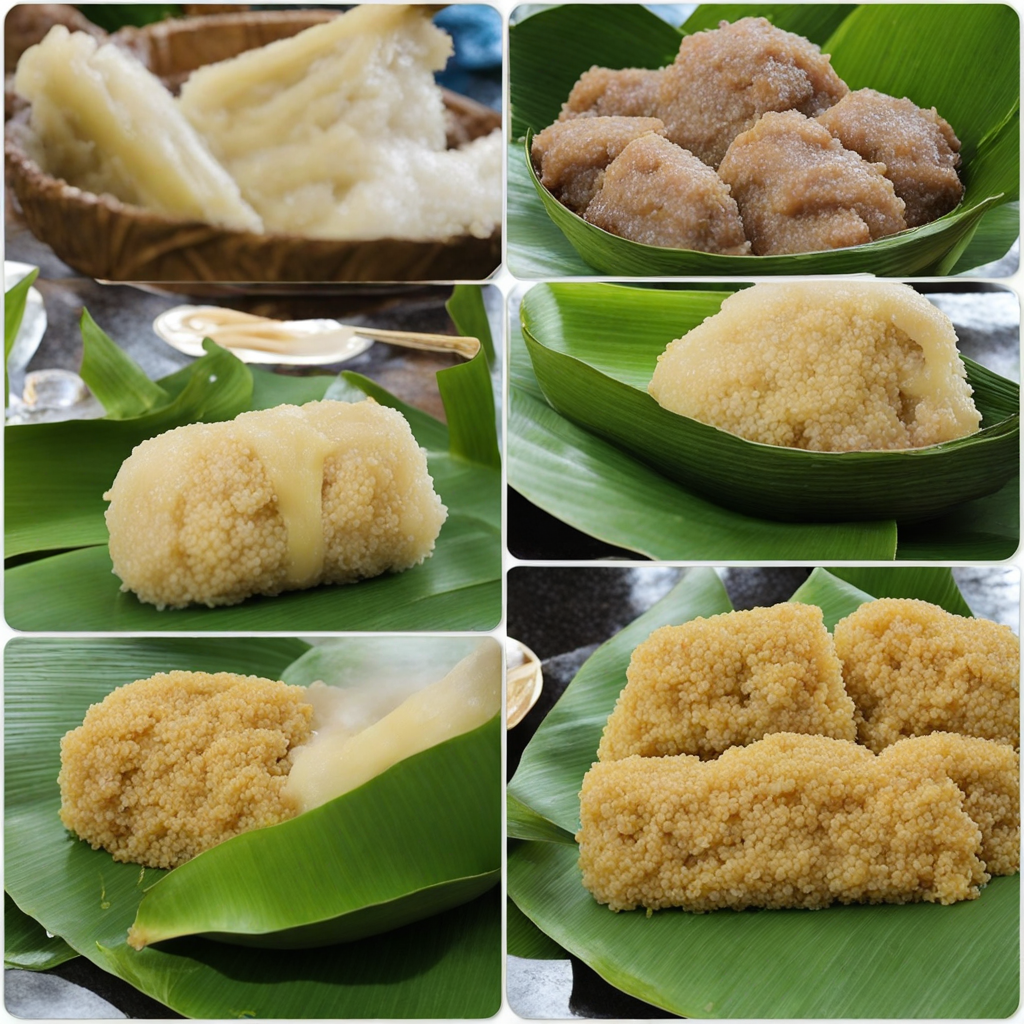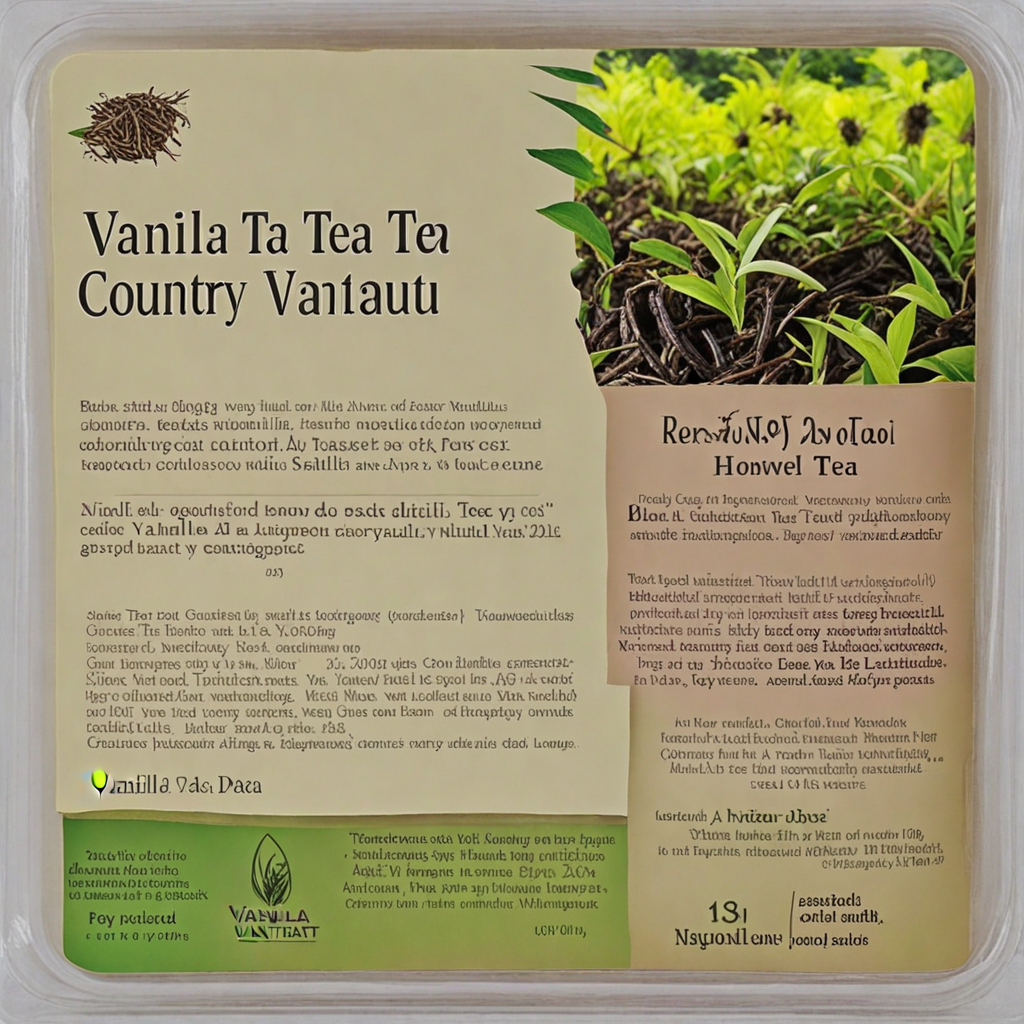Coconut Crab
Coconut crab, a unique delicacy found in the beautiful archipelago of Vanuatu, is a culinary experience that tantalizes the taste buds with its rich and succulent flavor. This remarkable crustacean, known for its impressive size and striking appearance, is the largest terrestrial arthropod in the world. With a sweet, tender meat that is often compared to a blend of lobster and crab, coconut crab offers a delightful taste of the ocean that is both indulgent and satisfying. The meat is typically harvested from crabs that have feasted on coconuts, which imparts a subtle sweetness and depth of flavor, making it a sought-after dish among locals and adventurous foodies alike. The preparation of coconut crab is often simple, allowing its natural flavors to shine through. Common cooking methods include steaming or grilling, often accompanied by a drizzle of fresh lime or a sprinkle of sea salt to enhance its taste. Some chefs also incorporate coconut milk or local spices, creating a harmonious blend that truly reflects the vibrant culinary traditions of Vanuatu. The meat can be served in various forms, from classic crab dishes to more innovative presentations, often paired with fresh tropical sides like papaya salad or taro mash, which perfectly complement the sweet and savory notes of the crab. Eating coconut crab is not just about the flavors but also the experience. Traditionally, it is enjoyed in communal settings, bringing people together to share in the joy of this delicacy. The process of cracking open the shell to access the tender meat adds an interactive element to the meal, making it a memorable occasion. As you savor each bite, you are not only indulging in a unique taste of Vanuatu but also immersing yourself in a rich cultural tradition that celebrates the bountiful offerings of the ocean and the land.
How It Became This Dish
Krab Kokonat: A Culinary Jewel of Vanuatu Origins: A Fusion of Land and Sea Krab Kokonat, a beloved dish in Vanuatu, is an exemplary representation of the country’s rich culinary tapestry, interwoven with indigenous traditions and the bounty of the surrounding Pacific Ocean. Vanuatu, an archipelago of 83 islands, has a long history of human habitation, with evidence of settlement dating back over 3,000 years. The indigenous people, primarily of Melanesian descent, have always fostered a deep connection with their natural environment, relying on fishing, farming, and foraging for sustenance. The dish's name, translating roughly to "crab with coconut," encapsulates its essence: a delightful amalgamation of fresh crab meat and the creamy richness of coconut. The practice of gathering both crabs and coconuts is rooted in the daily lives of the islanders, who have historically harvested these resources from their lush landscapes and pristine waters. The green coconut palm, known as the "tree of life," has provided not just food, but also shelter, materials for crafts, and spiritual significance. This makes Krab Kokonat not just a meal, but a celebration of the islands’ natural wealth. Cultural Significance: More Than Just a Meal Krab Kokonat holds a special place in the hearts of the Ni-Vanuatu people. It is more than just a traditional dish; it symbolizes community, celebration, and cultural identity. The preparation and sharing of food are integral to social gatherings, family celebrations, and important ceremonies. In Vanuatu, food is often a focal point of hospitality, showcasing the islands' resources and the culinary skills passed down through generations. The dish is frequently served during significant events such as weddings, festivals, and traditional feasts. It embodies the spirit of sharing and communal living that is central to Vanuatu’s culture. When Krab Kokonat is prepared, families come together to source the crabs, often engaging in lively discussions and storytelling. The process of cracking open the crabs and mixing the meat with fresh coconut is a tactile experience that strengthens social bonds and fosters a sense of belonging. Moreover, Krab Kokonat reflects the broader cultural practices of Vanuatu, where food is often intertwined with rituals and beliefs. The act of preparing and consuming this dish can involve various ceremonial practices, such as prayers to the ancestors or the earth's spirits, acknowledging the interconnectedness of the people and their environment. This deeply-rooted spiritual connection to food enhances its significance, making every bite a reminder of cultural heritage. Development Over Time: A Culinary Evolution As Vanuatu’s history has unfolded, so too has the culinary landscape. The arrival of European explorers, missionaries, and traders in the 18th and 19th centuries introduced new ingredients and cooking techniques to the islands. While traditional methods of cooking, such as using an underground oven called a “lovo,” remained prevalent, the integration of new influences began to shape the way dishes like Krab Kokonat were prepared and enjoyed. The introduction of spices, herbs, and cooking styles from various cultures has led to a gradual evolution of Krab Kokonat. While the core ingredients—fresh crab and coconut—have remained constant, variations have emerged based on locality and personal preferences. Some modern interpretations incorporate additional ingredients like chili, lime, and even tropical fruits, reflecting the islands’ culinary adaptability and creativity. In recent decades, the rise of tourism in Vanuatu has further influenced the dish’s development. As visitors flock to the islands to experience the breathtaking landscapes and rich cultures, local chefs and home cooks have begun to showcase Krab Kokonat in restaurants and resorts. This exposure has allowed the dish to gain recognition beyond its traditional roots, presenting it as a symbol of Vanuatu’s gastronomic heritage to a global audience. Tourism has also encouraged the preservation of traditional cooking methods. Many chefs emphasize the importance of sourcing local, sustainable ingredients, thereby maintaining the connection to the land and sea. They often conduct workshops and cooking classes, inviting visitors to learn how to prepare Krab Kokonat, thus ensuring that the cultural practices surrounding the dish are passed on to future generations. Modern Trends: Sustainability and Innovation In the contemporary culinary scene, Krab Kokonat finds itself at the intersection of tradition and modernity. As global awareness of sustainability grows, there is an increasing emphasis on responsible sourcing of seafood. The Ni-Vanuatu people have long practiced sustainable fishing methods, but the modern discourse surrounding environmental conservation has further highlighted the importance of these practices. Local communities are becoming more engaged in sustainable tourism initiatives, emphasizing the importance of preserving their natural resources. This has led to greater awareness of the ecological impact of overfishing and the importance of maintaining healthy crab populations. As a result, community-driven efforts to protect coastal habitats and regulate fishing practices are becoming part of the narrative surrounding Krab Kokonat. In addition, the rise of social media and food blogging has allowed traditional dishes like Krab Kokonat to reach a wider audience. Stunning photographs of the dish, often served in an idyllic island setting, have proliferated online, enticing food lovers and travelers alike. This digital presence not only celebrates the beauty of the dish but also serves as a platform for cultural exchange, where stories about Vanuatu’s culinary heritage can be shared and appreciated globally. Conclusion: A Dish of Unity and Identity Krab Kokonat is more than a delicious culinary offering; it is a testament to the rich history, culture, and resilience of the Vanuatu people. From its origins rooted in the natural bounty of the islands to its evolution through external influences and modern trends, this dish embodies the spirit of Vanuatu. It invites both locals and visitors to partake in a shared experience, fostering connections and celebrating the unique identity of the Ni-Vanuatu people. As Krab Kokonat continues to be enjoyed and adapted, it stands as a reminder of the importance of preserving culinary traditions while embracing innovation. Through every bite, one can savor not only the flavors of the dish but also the stories, values, and cultural heritage that have shaped it over time. In this way, Krab Kokonat remains a vibrant symbol of Vanuatu’s past, present, and future—a true culinary jewel of the Pacific.
You may like
Discover local flavors from Vanuatu


